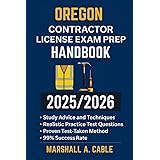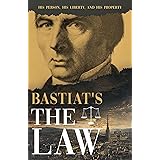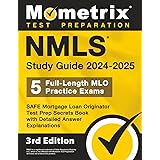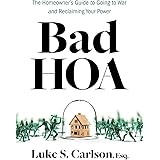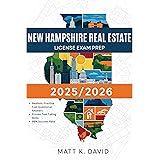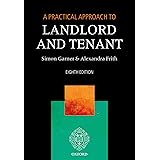Statistics consistently demonstrate that strategic real estate acquisition remains a cornerstone for significant wealth accumulation, with numerous investors employing sophisticated methodologies to scale their portfolios. As briefly introduced in the accompanying video, the BRRRR (Buy, Rehab, Rent, Refinance, Repeat) strategy has gained considerable prominence for its efficacy in leveraging capital and accelerating property acquisition. This method, when executed with precision and a deep understanding of market dynamics, allows for the continuous reinvestment of equity, thereby compounding asset growth over time.
The core principle involves transforming a distressed or undervalued asset into a high-performing income-producing property. This process demands a meticulous approach to property identification, value-add renovation, and judicious financial structuring. The ability to extract capital from a seasoned investment and redeploy it into new opportunities forms the economic engine of the BRRRR model, distinguishing it from traditional buy-and-hold strategies that often require significant fresh capital for each new acquisition.
Mastering the BRRRR Method for Real Estate Investing
The BRRRR strategy is an iterative process designed to maximize investment returns through a sequential series of actions. Each phase requires specific expertise and careful planning, ultimately culminating in the extraction of capital for further investment. Understanding these intricate stages is paramount for any investor seeking to implement this powerful wealth-building framework effectively.
Strategic Property Acquisition: The “Buy” Phase
The initial phase, “Buy,” is arguably the most critical component of the BRRRR strategy. Success in this stage often dictates the viability of subsequent steps. Investors are primarily focused on identifying properties significantly below market value, typically those requiring substantial renovation or possessing inherent value-add potential. This necessitates comprehensive market analysis, understanding local comparable sales, and assessing the “after repair value” (ARV) with high accuracy.
Rigorous due diligence is conducted to uncover any latent issues that could impact renovation costs or future marketability. This includes thorough property inspections, title searches, and an evaluation of zoning regulations. Securing a property at a favorable purchase price ensures sufficient equity is built in from the outset, providing a robust foundation for the entire BRRRR cycle. Often, properties acquired through foreclosures, short sales, or off-market channels present optimal opportunities for achieving these discounted valuations.
Value-Add Renovation: The “Rehab” Imperative
Following acquisition, the “Rehab” phase involves strategic improvements designed to increase the property’s market value and appeal to prospective tenants. The scope of renovation can vary significantly, ranging from cosmetic upgrades to complete structural overhauls. A critical aspect of this phase is cost management and a clear understanding of which improvements yield the highest return on investment (ROI).
Expenditure on non-essential upgrades must be carefully managed to avoid overcapitalization, which could dilute potential equity gains. Detailed budgeting, efficient project management, and collaboration with reliable contractors are indispensable for completing renovations on time and within financial parameters. The objective is to elevate the property’s condition and features to command top-tier rental rates and a higher appraised value, which is crucial for the subsequent refinancing stage.
Optimizing Rental Performance: The “Rent” Objective
Once renovations are completed, the “Rent” phase focuses on securing qualified tenants and establishing a consistent income stream. Effective property management, whether self-managed or outsourced, is vital to maximizing rental income and minimizing vacancies. This involves strategic marketing of the property, rigorous tenant screening processes, and the establishment of robust lease agreements that protect the investor’s interests.
Setting the optimal rental price requires an understanding of local market rents for comparable properties, balancing the need for competitive pricing with the objective of maximizing cash flow. A strong rental history and consistent occupancy are highly valued by lenders during the refinancing process, as they demonstrate the property’s income-generating potential and stability. This stable income contributes positively to the debt service coverage ratio (DSCR), a key metric for lenders evaluating commercial or investment property loans.
Leveraging Equity through Refinancing: The “Refinance” Catalyst
The “Refinance” stage is the pivotal moment where accumulated equity is unlocked. After a period of rental income has been established, the property’s new, higher value (post-rehab) is assessed through an independent appraisal. Lenders typically offer a cash-out refinance based on a percentage of this appraised value, often between 70% and 80% loan-to-value (LTV), as noted in the video segment.
For instance, if a property’s value has increased by $100,000 post-rehab, lenders may provide $70,000 to $80,000 of that additional equity as a new loan. This capital is then returned to the investor, effectively replenishing the funds used for the initial purchase and renovation. The ability to extract this capital allows investors to recoup their initial investment, often leaving very little, if any, cash remaining in the deal, while still owning an income-producing asset. Understanding current interest rates and lender requirements for investment property loans is critical during this phase.
Scaling Your Portfolio: The “Repeat” Strategy
The final “Repeat” phase encapsulates the true power of the BRRRR strategy. The capital extracted from the refinancing of the first property is then utilized as the down payment or acquisition capital for a subsequent investment. This cyclical process allows investors to continually acquire new properties without needing to infuse substantial new capital for each transaction, thereby significantly accelerating portfolio growth.
Consistent application of the BRRRR method transforms an individual investment into a scalable system for wealth creation. Each successful cycle adds another income-producing asset to the portfolio, increasing passive income streams and compounding net worth. Effective management of the growing portfolio, including diversification and risk mitigation strategies, becomes increasingly important as the number of properties expands. This strategic, iterative approach positions investors for substantial long-term financial success in real estate.



